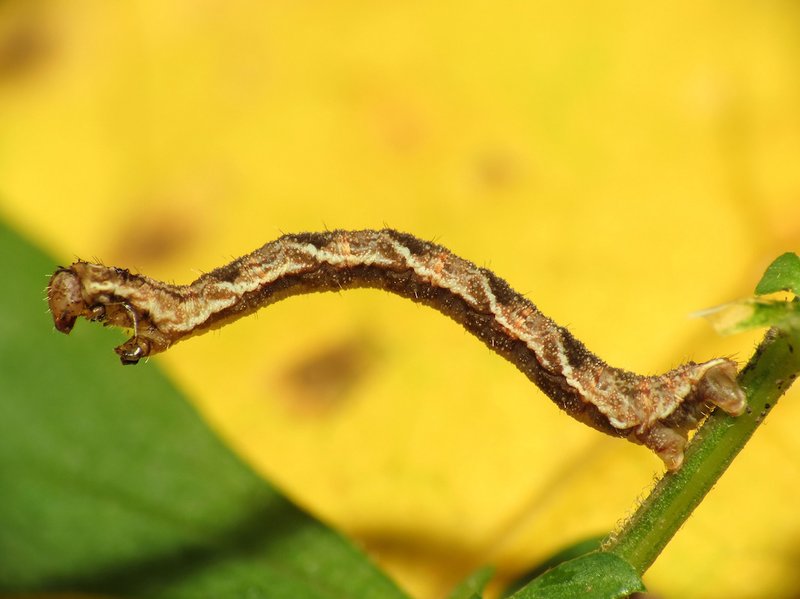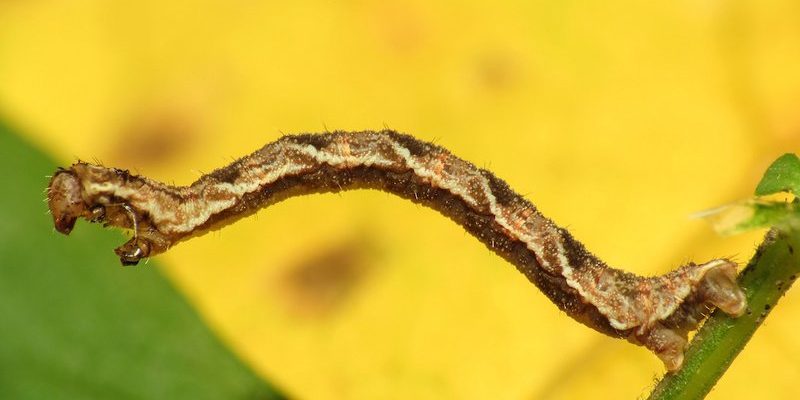
When we talk about inchworms, we’re usually referring to the larvae of geometer moths. They get their name from their unique way of moving: inching along by contracting and stretching their bodies. But before they become those charming little pests in our gardens, they go through some pretty amazing changes, and understanding their pupation process is key.
What Is Pupation?
Pupation is a stage in the life cycle of certain insects, including inchworms, where they undergo a significant transformation. Imagine a caterpillar that suddenly decides to take a break and focus on its future. During this time, it stops eating and seeks out a safe place to hang out—often a hidden nook on a branch or under a leaf. This restful phase is their way of getting ready to become something entirely different.
During pupation, the inchworm wraps itself up into a protective casing called a chrysalis. This is a crucial phase where their body starts changing dramatically. It’s like a caterpillar going into a personal retreat to emerge as a stunning moth. The pupation process can take anywhere from a few days to several weeks, depending on the species and environmental conditions. Here’s where it gets exciting, though—the inchworm’s body is literally breaking down and reforming into the adult moth!
The Stages of Pupation
Understanding the stages of pupation can help you appreciate just how remarkable this transformation is. Here’s a breakdown:
- Pre-Pupa Stage: Before pupation begins, inchworms prepare themselves by finding a safe spot. They stop feeding and begin searching for a secure place to attach themselves.
- Pupa Formation: Once they’ve found a suitable location, they spin silk threads to attach themselves. This is when they form a protective chrysalis around their bodies.
- Metamorphosis: Inside the chrysalis, the real magic happens. The inchworm’s body tissues break down and reorganize. It’s like a design overhaul, transforming from the caterpillar to a moth.
- Emergence: When the time is right, the adult moth breaks free from the chrysalis. It might take a moment for its wings to unfold, but soon enough, it’s ready to take flight!
Each stage is essential for the inchworm’s development, and they rely on specific conditions to complete the cycle. Think of it like an intricate dance that has to be just right.
Environmental Factors Affecting Pupation
You might be wondering what influences the pupation process. Several environmental factors can make a big difference in whether inchworms can successfully transition into moths. Here are a few key points to consider:
- Temperature: Different species of inchworms thrive in various temperatures. Warmer temperatures often speed up the process, while colder ones may slow it down. Think of it like how we humans feel more active on a sunny day.
- Humidity: Inchworms prefer humid environments for pupation. Too dry, and they might not survive the process. It’s like needing the right amount of moisture in the air to bake a perfect cake!
- Predator Presence: If there are lots of predators nearby, inchworms may take extra precautions during pupation, delaying that all-important transformation.
These factors remind us that inchworms, like all creatures, have a delicate balance to maintain. One tiny change in their environment can lead to a completely different outcome.
How Long Does Pupation Last?
The duration of the pupation phase can vary significantly based on various factors. Generally, you can expect the pupation process to last anywhere from a week to several weeks. Here’s a closer look:
- Species Variation: Different species of inchworms have different pupation timelines. Some might take just a week, while others could be in there for months!
- Seasonal Changes: In cooler months, inchworms might enter a state of dormancy, extending their pupation period until conditions improve. It’s like taking a winter vacation until the snow melts.
- Health and Nutrition: An inchworm that has been well-fed and is healthy may pupate faster than one that’s been struggling to find food. Nutrition plays a key role in their development.
So, if you’re ever waiting for a moth to emerge from a chrysalis, you might need to pack some patience—especially if you’re dealing with a slower species.
The Importance of Pupation
Why should we care about the pupation process? For one, it’s a crucial step in the life cycle of inchworms and has broader ecological significance. Here are a few reasons why this process matters:
- Biodiversity: The transformation of inchworms into moths contributes to the diversity of ecosystems. Moths play essential roles as pollinators and as part of the food chain.
- Research Opportunities: Scientists study pupation to understand biological processes better, which can lead to advancements in pest control, conservation, and even medicine.
- Personal Connection: Observing this fascinating process can foster a deeper appreciation for nature. It’s a reminder of how interconnected all life is.
In short, pupation isn’t just an interesting phenomenon; it’s vital for ecological health and our understanding of the natural world.
How to Observe the Pupation Process
If you’re intrigued and want to witness this process firsthand, here’s how you can go about it:
1. Find Inchworms: Search for inchworms on trees or plants, especially in the spring and summer when they’re more active.
2. Create a Habitat: Set up a small enclosure with some leaves, branches, and a little moisture to mimic their natural environment. Make sure it’s safe and secure.
3. Monitor Them: Keep an eye on your inchworms as they transition through their stages. With some luck, you might catch the whole metamorphosis on camera!
4. Be Patient: Remember, good things take time. Be prepared for a wait, and enjoy the process!
By observing inchworms, you not only learn about their life cycle but also develop a deeper appreciation for nature’s wonders.
In conclusion, the pupation process of inchworms is a great example of nature’s incredible creativity. Each step is crucial for these little creatures as they evolve from inching caterpillars into beautiful moths. Understanding this transformation gives us a glimpse into the delicate balance of life and the myriad wonders that surround us. So next time you see an inchworm, take a moment to appreciate the remarkable journey it will soon undertake!

